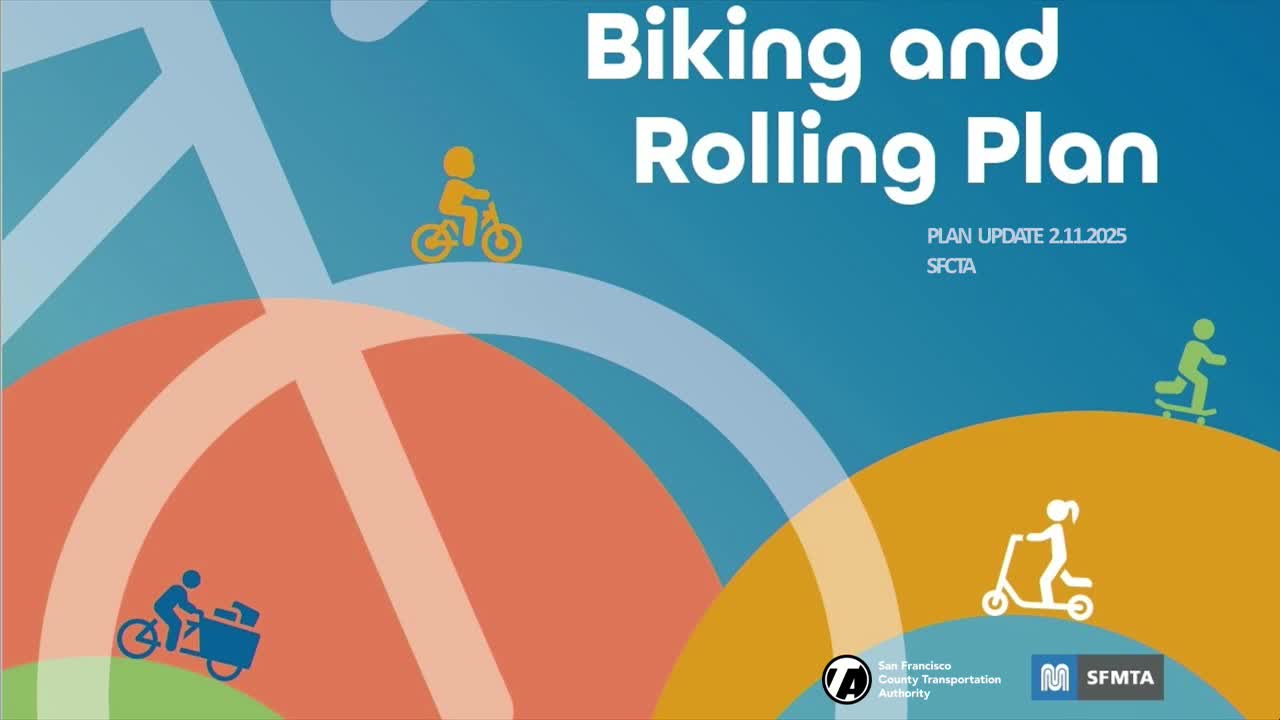San Francisco unveils inclusive biking and rolling plan for safer transportation
February 11, 2025 | San Francisco City, San Francisco County, California
This article was created by AI summarizing key points discussed. AI makes mistakes, so for full details and context, please refer to the video of the full meeting. Please report any errors so we can fix them. Report an error »

The City of San Francisco is gearing up to approve a transformative Biking and Rolling Plan aimed at creating a safer and more connected network of bikeways for all residents. This initiative, an update to the city’s bike plan from 15 years ago, emphasizes inclusivity and community engagement, ensuring that the needs of diverse groups—including caregivers, young people, and those with disabilities—are at the forefront of transportation planning.
Maya Small, a key figure in the project, highlighted the plan's focus on belonging and inclusion, stating, "People who bike and roll belong in San Francisco." The plan aims to address historical inequities in transportation access, particularly in communities of color that have faced exclusion and harm from past planning decisions. It seeks to repair these past injustices by involving community members in decision-making processes and prioritizing their needs.
The Biking and Rolling Plan outlines five main goals, including putting people first, serving local needs, and ensuring accountability through regular check-ins every two years. The plan also recognizes the importance of social infrastructure, such as education and accessibility, alongside physical bikeway improvements.
Community engagement has been a cornerstone of the planning process, with over 1,000 survey responses and 200 outreach events conducted to gather input from residents. The plan reflects a commitment to addressing the unique transportation priorities of various neighborhoods, with a focus on pedestrian safety and multimodal planning.
As the city prepares for the plan's adoption, officials are optimistic about its potential to reshape San Francisco's transportation landscape. The Biking and Rolling Plan not only aims to enhance biking infrastructure but also to foster a culture of inclusivity and community-driven decision-making, setting a new standard for urban mobility in the city.
Maya Small, a key figure in the project, highlighted the plan's focus on belonging and inclusion, stating, "People who bike and roll belong in San Francisco." The plan aims to address historical inequities in transportation access, particularly in communities of color that have faced exclusion and harm from past planning decisions. It seeks to repair these past injustices by involving community members in decision-making processes and prioritizing their needs.
The Biking and Rolling Plan outlines five main goals, including putting people first, serving local needs, and ensuring accountability through regular check-ins every two years. The plan also recognizes the importance of social infrastructure, such as education and accessibility, alongside physical bikeway improvements.
Community engagement has been a cornerstone of the planning process, with over 1,000 survey responses and 200 outreach events conducted to gather input from residents. The plan reflects a commitment to addressing the unique transportation priorities of various neighborhoods, with a focus on pedestrian safety and multimodal planning.
As the city prepares for the plan's adoption, officials are optimistic about its potential to reshape San Francisco's transportation landscape. The Biking and Rolling Plan not only aims to enhance biking infrastructure but also to foster a culture of inclusivity and community-driven decision-making, setting a new standard for urban mobility in the city.
View full meeting
This article is based on a recent meeting—watch the full video and explore the complete transcript for deeper insights into the discussion.
View full meeting
